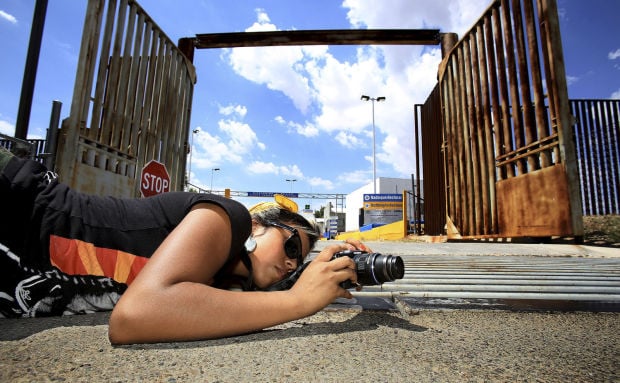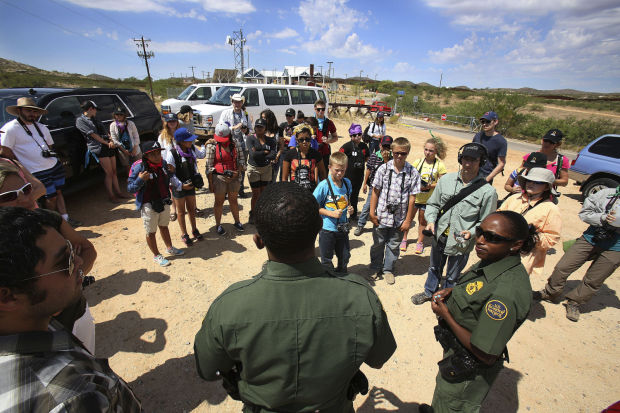With her camera pushed between the metal slats of the border fence near the Sasabe port of entry, Pachynne Ignacio stared into her viewfinder, intent on capturing her new perspective on the border.
“I’d never seen the fence, and it’s just like, wow, it’s actually real and it’s a problem down here,” said the 16-year-old Sells native. “It just makes it feel much more real than it does at home.”
Ignacio was part of a group of 23 youths, ages 12 to 18, at a National Geographic photo camp in Arivaca this week. The free camp ended Friday with an exhibition of the students’ work at the Arivaca Community Center.
Participants had the opportunity to learn about photography as they traveled throughout the region, from the fence at Sasabe to the ghost town of Ruby and its abandoned mine filled with bats.
The project was borne out of Jason De León’s wish to give back to the community that has become his second home as his time doing research in Arivaca comes to an end.
Since 2009, the assistant professor of anthropology at the University of Michigan has led groups of students through the Sonoran Desert to study unauthorized migration.
“This town has done a lot for all of us on a personal level, so this was just a way to say thank you from the bottom of our hearts,” he said. “A way to provide these young kids with the opportunity to do something special.”
Manuel Grijalva, 12, said he was enjoying the camp and had taken pictures of animals, which is what he wanted to focus on. The Sasabe native had nothing but praise for his teachers.
“They’re doing a good job. They’ve taught us how to take photos up close and from far away. They showed us about angles, everything,” he said.
While the technical aspect of photography was important to the instructors, a group that included National Geographic photographers and editors, it was the medium’s ability to tell a story that they wanted to explore.
“We really spend a lot of time looking at every picture and looking on two levels,” said camp director Kirsten Elstner. “We’re looking at composition and light and why these pictures are interesting to look at.”
Elstner is the founder of Vision Workshops, a nonprofit group that organizes the photo camps in partnership with National Geographic. For the past 10 years, the group has put on camps throughout the United States and internationally, with the goal of helping young people tell their stories through photography.
“The idea behind this is to get youth perspectives on issues that are important to everyone,” Elstner said. “In this case it’s what it’s like to live in this community, the border area and immigration.”
The students didn’t waste any time, taking 4,000 photos on their first day of camp Monday. As they clustered near the border Tuesday morning, some already had taken hundreds of shots.
Fortunately for them, instructors said, they had good students.
“They’ve taken a lot so far, and we’ve been going through them at night, but they have been really listening,” Elstner said. “When you’re looking at the edits, you go, ‘Oh, this person really paid attention to our lesson today.’ ”
Participants said the camp was a great experience. They met new people and had a lot of fun, and even though the towns they came from — Sasabe, Amado, Arivaca, Sells — were close geographically, many of the young people knew little about their neighbors before this week.
And for several of them, photography was something they would keep doing beyond simply taking snapshots and selfies.
“Being able to capture moments is what’s really cool about this,” Ignacio said as she looked to the border and the kids gathered around the fence. “This is going to stay here forever, but the people won’t.”







